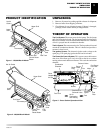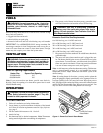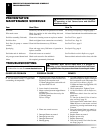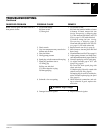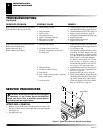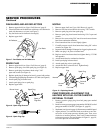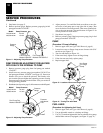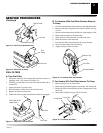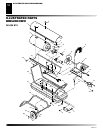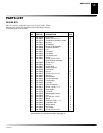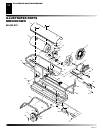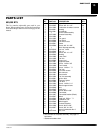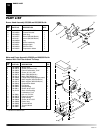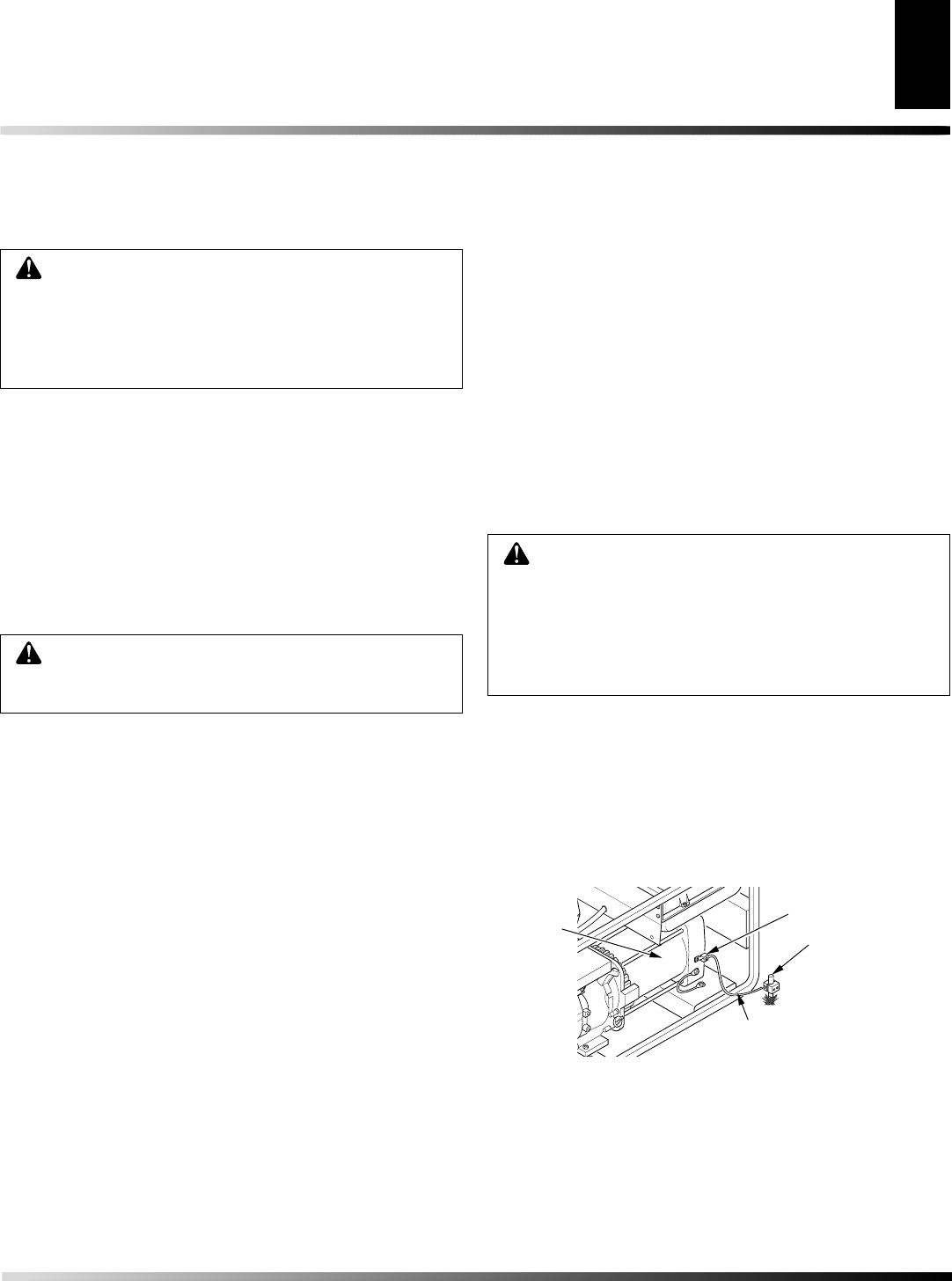
105850-01D
5
5
OPERATION
Continued
TO STOP HEATER
CAUTION: Never unplug heater while heater is
running. Heater must go through purge cycle. The
purge cycle cools the combustion chamber. Damage
to heater can occur if combustion chamber is not
cooled. Do not restart heater until purge cycle is
complete.
1. Turn thermostat dial to lowest temperature setting. This will
cause heater flame to go out. The motor will continue to run
during the purge cycle. This allows the fan to cool the com-
bustion chamber. When the purge cycle is finished, the motor
will stop. Do not unplug heater until purge cycle is finished.
2. Unplug extension cord from outlet.
3. To temporarily stop heater, set thermostat at a temperature lower
than air around heater. Heater will cycle back on if air tem-
perature around heater matches thermostat setting.
TO RESTART HEATER
CAUTION: Do not restart heater until purge cycle
is finished. The purge cycle cools the combustion
chamber.
1. Wait until purge cycle is finished after stopping heater.
2. Repeat steps under To Start Heater, page 4.
STORING, TRANSPORTING,
OR SHIPPING
Note:
If shipping transport companies require fuel tanks to be
empty.
1. Drain all fuel from fuel lines and pump/filter (see Fuel Filters,
page 11).
2. Clean and flush fuel filter in fuel pump if equipped (see Fuel
Filters, page 11).
3. Remove drain plug and drain fuel tank.
4. Replace drain plug.
5. If any debris is noted in old fuel, add 1 or 2 quarts of clean
kerosene to tank, stir, and drain again. This will prevent ex-
cess debris from clogging filters during future use.
6. Replace fuel cap or drain plug. Properly dispose of old and
dirty fuel. Check with local automotive service stations that
recycle oil.
7. Add two gallons (350,000 Btu/Hr) or three gallons (600,000
Btu/Hr) of clean kerosene or No. 1 fuel oil to fuel tank.
8. Replace fuel cap.
9. Operate heater for 5 minutes (see Operation, page 4).
10. Stop heater and let cool completely.
11. Remove drain plug and drain fuel tank.
12. Replace drain plug.
13. Properly dispose of old and dirty fuel.
14. If storing, store heater in a dry location. Make sure storage
place is free of dust and corrosive fumes.
IMPORTANT:
Do not store kerosene over summer months for use
during next heating season. Using old fuel could damage heater.
WARNING: Before operating heater or any appli-
ance from a portable generator, verify that generator
has been properly connected to earth ground. Im-
proper grounding or failure to ground generator can
result in electrocution if a ground fault occurs. Refer
to owner’s manual supplied by generator manufac-
turer for proper grounding procedures.
The operating voltage range of the heater is 108 to 132 Volts (120
Volts +/- 10%). Prior to plugging heater into generator the output
voltage should be verified (if generator is equipped with the automatic
idle feature, the output voltage should be measured with the generator
running at full speed). If the voltage does not measure in this range
the heater should not be plugged into the generator.
Refer to Operation, pages 4 and 5, for starting, stopping, and
resetting heater procedures.
OPERATION WITH PORTABLE
GENERATOR
Figure 5 - Typical Generator Grounding Method (Generator
construction may vary from that shown)
Ground Lug
Ground Wire (#10 AWG -
Stranded-Copper)
Alternator
Copper or Brass
Grounding Point
OPERATION
STORING, TRANSPORTING, OR SHIPPING
OPERATION WITH PORTABLE GENERATOR





